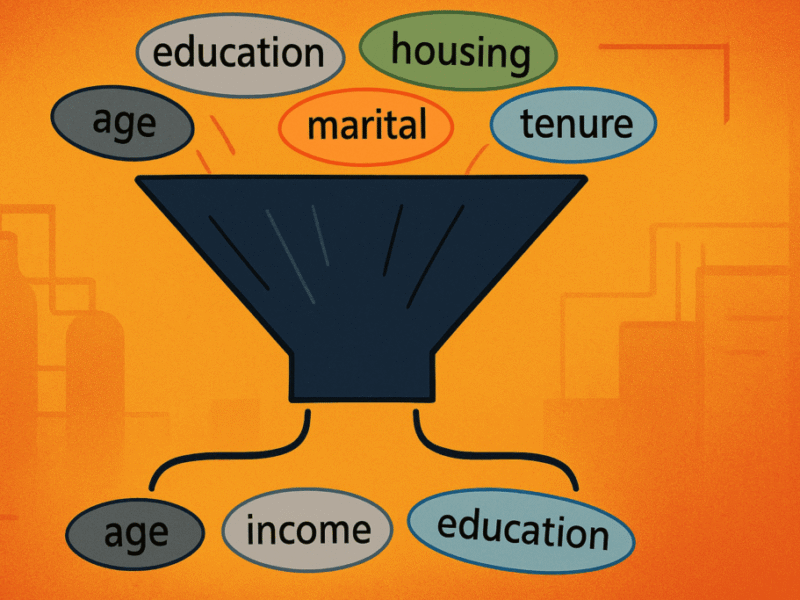Remember when ‘workflow automation’ meant forwarding emails to the right person? Those days now seem like ancient history. Today, AI automation trends are reshaping how enterprises operate, making systems smarter and more proactive. Now, AI doesn’t just follow instructions; it writes its playbook, fixes problems you didn’t even know existed, and sometimes makes decisions that surprise even its creators.
The transformation happening right now isn’t just an upgrade; it’s a complete reimagining of what automation can be. For enterprises, understanding this shift is crucial for staying competitive in 2025 and beyond.
The current state of AI automation
A few years ago, automation was primarily focused on cost reduction and eliminating manual labor. The traditional automation methods used RPA (Robotic Process Automation), a technique that involves bots to automate tasks in a rule-based manner. Using RPA, businesses automate repetitive and mundane tasks that would otherwise require a significant amount of human work hours. By using RPA, companies can automate tedious, repetitive tasks that would typically require a significant amount of time from employees.
It is not that those were not useful, but they had a minimal scope. By 2025, the AI landscape is a whole different game; automation tools are not just time savers but also value additions.
Another paradigm shift is that traditional automation methods aimed to automate individual tasks; however, the focus is now on orchestrating entire workflows. Think of customer service; previously, chatbots answered basic, preset, common questions. However, with the aid of AI and automation, businesses can now accurately understand customer intent based on comprehensive customer records. Bots can even understand a customer’s sentiment and provide answers that are not only relevant to their information but also closely related to their emotional tone.
The current automation revolution’s true purpose isn’t merely to increase efficiency, but to build a system that can process, understand, and act in real-time. These new automation upgrades allow businesses to unlock new revenue streams, enhance decision-making, and create a transformative experience for their customers.
This only scratches the surface. The real excitement lies in what’s emerging on the horizon. Here are the five trends that will redefine the perception of enterprise automation.
Top 5 AI Automation Trends Enterprises Must Watch
Understanding AI automation trends is crucial for enterprises to stay competitive in 2025 and beyond.
The emergence of Agentic AI
We’ve reached a stage where agentic AI is everywhere and no longer needs to be defined. Soon, Agentic AI will become an integrated layer of AI in our everyday lives.
This represents a shift from passive automation to more active automation that can plan, reason, and act autonomously without burning human calories. These autonomous systems are not only proficient at single-step tasks, but they also perform complex multi-step processes effortlessly in a short amount of time.
Apart from these practical theories, what does agentic AI look like in 2025 or beyond
Proactive problem solvers: Agentic AI is rewriting the automation rules by being proactive systems that do not get stuck whenever there is deviation from the actual process, but instead, something that pauses, analyzes, and tries out new solution approaches to achieve optimum outcomes.
For instance, JPMorgan Chase leverages agentic AI in fraud detection and risk mitigation. These systems autonomously flag and even block suspicious credit card accounts without requiring human review.
DHL has transformed its logistics into AI-powered systems that adjust delivery schedules by considering various real-time factors such as unexpected customer demands, traffic conditions, and even weather conditions.
Enterprise-grade orchestration: The Agentic AI evolution is changing our understanding of AI agents that only do what we instruct. The new version is like a seasoned team with multiple agents, each with a specialized knowledge base, working together to achieve a common outcome. This cohesive orchestration, even across cross-functional teams, will turn the tables and redefine how we perceive automation.
In final words, Agentic AI is the digital nervous system that powers an autonomous enterprise. This technological evolution mirrors biological evolution, which adapts to the changing environment, but at a much faster and unprecedented rate, allowing businesses to scale more efficiently and effectively.
Democratization through no-code / low-code development
Gone are the days when solution deployments took months, waiting for the tech team of data scientists and ML engineers to build products or applications. Thanks to the rise of no-code or low-code platforms, the entry barrier to AI adoption has visibly lowered, making it an accessible technology evolution for anyone and everyone.
Moreover, this DIY automation is made possible only using features like easy visual interfaces, simple drag and drop features, and ready-to-use AI models and components.
In today’s AI language, this concept is referred to as “citizen developers,” which means that anyone with no prior coding knowledge can build, advance, and deploy automation solutions. This approach empowers the business users who understand the problems firsthand to create tailored solutions, making the execution gap almost negligible.
Human in the loop is a must-have
A common misconception is that with the rise of AI and automation, the role of human workers will diminish. However, the reality is quite the opposite. To be precise, human-in-the-loop establishes itself as the gold standard for responsible AI automation, serving as an augmentation layer between AI and humans, allowing for effective collaboration and seamless execution.
While autonomous AI may be a catalyst for improving business processes by increasing speed, recognizing better patterns, and even problem-solving, human judgment, ethical thinking, and contextual understanding are critical, which will fall into place only when there is human involvement at the right places. This way, the possibility of developing algorithmic bias will be reduced, and governance frameworks will be met, adhering to the standards of responsible AI.
The key is purposefully combining human intelligence with automation to achieve a sweet spot between accuracy and productivity.
Hyperautomation is here
At first impression, hyperautomation might seem like a very complex subject, but it is not. It is more akin to a top-down approach that consolidates all aspects of automation under a single, holistic umbrella.
This unified approach involves blending machine learning (ML), robotic process automation (RPA), data mining, artificial intelligence (AI), and intelligent document processing (IDP) into a single automation fabric. This way, businesses can achieve end-to-end digital transformation by combining fragmented, disassociated modules into an enterprise-wide model.
However, what makes it even more interesting is that hyperautomation systems represent a significant step toward self-healing automation intelligence. Let us say that there is an outlier in a hyperautomation embedded system; the RPA bots don’t stop, they pass it on to the AI agents. Now, AI agents analyse the root cause of failure and immediately pass it to human judgment, ensuring the entire process stays on track.
Using hyperautomation, reputable companies such as Siemens have transformed their worst nightmares of 3-day-long invoice processing cycles into streamlined 30-minute process workflows.
Generative AI expansion
GenAI has been around for quite a long time, so what’s in the house for 2025?
Multi-modal AI to win: The new versions of GenAI can handle more than text; they perform well with images, audio, and even video. They are not just writing and generating; they are also hearing and creating across every medium available. For instance, GenAI systems are now analyzing security footage to generate detailed reports, monitoring sales calls to update CRM records, and performing various other tasks.
Domain-specific knowledge revolution: But here’s where GenAI gets exciting: it has evolved far beyond generic, one-size-fits-all models. The current GenAIs models possess highly specialized domain-specific knowledge bases and take suggestive actions even in critical sectors such as law, medicine, and finance.
These aren’t just language models with industry training data; they’re digital specialists that can provide strategic recommendations, generate financial projections, and navigate complex regulatory requirements with precision.
The most significant shift? GenAI has broken free from its creative sandbox. It started as a tool for content creation, but now businesses actively integrate it into their operational workflows and execution.
Wrapping up
Here’s the uncomfortable truth: while you’ve been reading this, somewhere an agentic AI just solved a problem that would have taken your team days to figure out. A hyperautomation system has just prevented a costly error from happening. Someone with no coding knowledge has just deployed a no-code solution.
This isn’t about keeping up with technology trends anymore; it’s about survival. The companies embracing these changes aren’t just getting more efficient; they’re playing by entirely different rules.
The race isn’t to catch up, it’s to become one of them.

